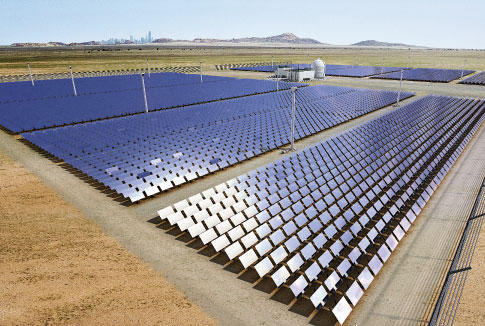Going Solar Has Never Been Easier
There’s never been a better time to retrofit your home with solar panels. The United States is the second largest consumer of electricity in the world and the demand for electricity will continue to rise for the next 30 years. As demand rises the costs will follow and with costs rising many homeowners are looking at alternative energy production.
How solar works
Installing the solar panels is just the beginning of your solar journey. Solar panels are installed to convert sunlight into electricity – specifically direct current (DC). Your household appliances don’t use DC power so there are small micro converters to convert the current. These micro converters are installed at the back of each panel which converts the direct-current into alternating current or AC power which can be used in your home. After that the electricity flows to your net meter which measures if you’re using or producing electricity. From there it routes to your breaker box and then inside your home for appliances and lights. Pretty simple.
Common Solar Questions
Lots of people wonder if they have a good home that will be able to use solar energy technology. The truth is most residential solar systems can fit and be installed on just about any roof. The best roofs are roofs which are not terribly steep and have unobstructed access to the sky. If your roof faces south for southwest and isn’t shaded it will produce the most energy. You don’t have to worry about your homeowners association getting in the way either. In most states the homeowners association cannot stop you from installing solar systems on your home. If you end up selling home your home the ownership of the solar system can easily be transferred along with the home. In most cases having a solar system working in your home increases the resale value due to the lower energy costs of living there.
The Weather
It’s obvious that solar panels produce the most energy when in direct sunlight. But it doesn’t have to be sunny for everything to work. In fact on cloudy or foggy days solar panels can produce about 30% of what it normally makes on a sunny day. The seasons don’t affect energy production either. If the solar panels are covered in snow they won’t produce power, but winter won’t slow down energy production.
Choosing a Solar Company
Investing in solar technology doesn’t have to be a bank breaking experience. Companies like Vivint Solar guarantee that the kilowatt hour price is lower than your current electricity provider. They install the equipment without you buying it and you promise to pay for the electricity you use. This ensures you can enjoy solar power without having to wait 20 years to recoup a large upfront. Professionally trained scholars come to your home and fit everything you need to get started using solar power.
Still Not Convinced?
The bottom line is that most people get into solar for the energy-cost savings. To save the most money it’s important that you choose a company with a power purchase agreement wherein the utility company agrees to purchase the power your system produces. If you make more energy than you are producing it can be stored and used when needed. Choosing correctly allows you to avoid a large upfront investment.
Energy costs have risen 40% in the last 15 years and there’s a good chance that they will not be going down anytime soon. Solar panels create clean renewable energy which helps protect the environments and brings us closer to fossil fuel independence. There is a big market for solar power and it’s a great time to get started making energy for your home from the sun.
Author bio: Rick Delgado loves writing about both internet and personal security and the advancements provided by new technology that improve our living standards.

